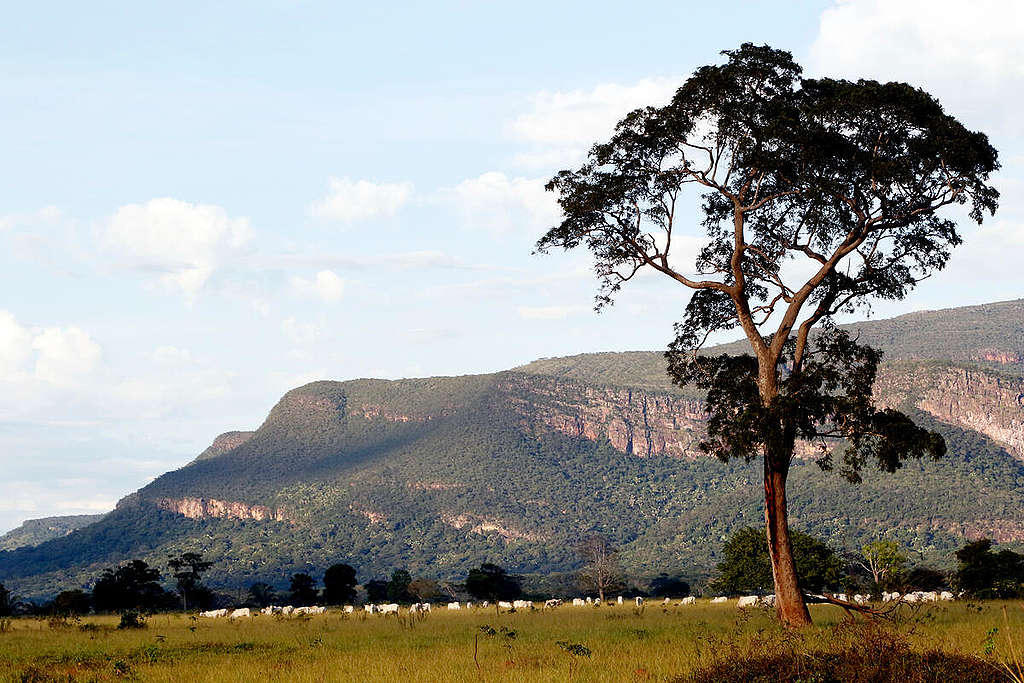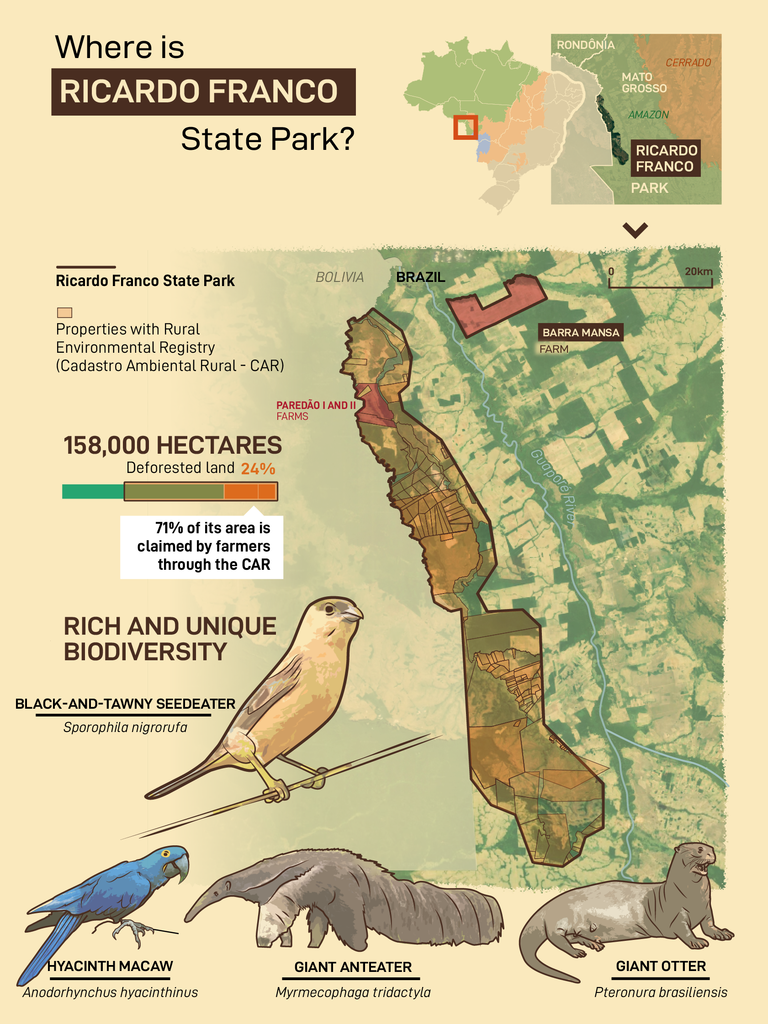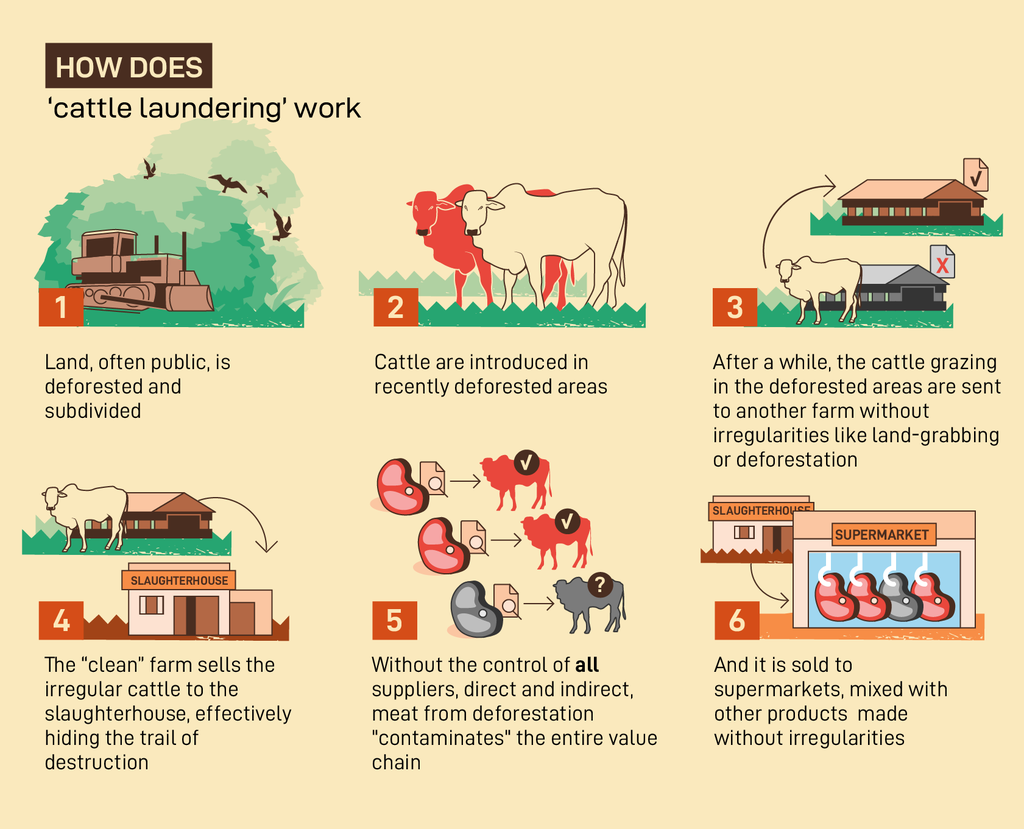One of the most successful ways to protect forests and biodiversity is the creation of conservation areas and Indigenous Lands. However, the Brazilian government has put a halt to new Indigenous land demarcations and is systematically dismantling its protection systems, resulting in skyrocketing deforestation rates, in a mad rush for the illegal destruction of the forest.
In 2019, deforestation in the Amazon increased by 30%
, with an even higher rate in protected areas and Indigenous Lands. And the trend is that 2020 will follow the same path. From January to April, deforestation alerts in the Amazon are up 62%, and within protected areas this increase has reached a staggering 167%, compared to the same period last year, according to data from the Brazilian National Institute for Space ResearchLand-grabbers, loggers and cattle ranchers have been taking advantage of the government’s anti-environmental agenda to advance over huge areas of forest, putting at risk unique species in Brazil. The Serra Ricardo Franco State Park, in the State of Mato Grosso shows how a forest that should have been protected has partially been replaced by pasture and the fauna has been replaced by cattle.

Serra Ricardo Franco State Park was created in 1997. It covers 158 thousand hectares in the border of Brazil and Bolivia, a region where 3 biomes meet: the Cerrado savanna, the Pantanal wetlands and the Amazon rainforest. An area of environmental transition, where different vegetation and animal species interact, home to unique biodiversity and still little known by science.
In the region, for instance, 472 bird species were identified, approximately a quarter of all bird species found in Brazil. One of them is the caboclinho-do-sertão, which is listed as vulnerable by the International Union for Conservation of Nature
(IUCN). Endangered mammals like the giant otter and the tamanduá-bandeira, the largest anteater in the world, can also be found there.
Despite all its importance for biodiversity, the protection of the park was never fully enforced by the government of the state and its forests and animals suffer from deforestation for pastures. More than 38 thousand hectares of the area that should be under full protection have been deforested, of which almost a third occurred after the creation of the Park. In total, 24% of the park’s area is deforested.
In addition, 71% of its entire length has been claimed by farmers through the Rural Land Registry. Many of these “farms” produce cattle, which are sold to markets beyond the seas, in Europe, Asia and the Middle East.

Meat tainted with forest destruction
According to a study by Greenpeace Brazil, of the 137 farms registered in the park, two stand out: Paredão I and II, with 4,123 ha, of which at least half was illegally deforested. At the end of 2016, the State Prosecutor’s Office of Mato Grosso requested the embargo of economic activities on farms within the park that were accused of illegal deforestation. It also requested to block the assets of the owners, as a way of guaranteeing the necessary resources for the recovery of the land. But these lawsuits are still pending, and the strong political pressure exerted by local farmers and politicians has delayed important measures to enforce the protection of the park.
During the prosecutor’s investigation, it was found that the Paredão l and ll farms were highly deforested after the park was created. Moreover, these farms show an extensive presence of cattle. In a study by Greenpeace Brazil and Repórter Brasil it was possible to verify that, between April 2018 and June 2019, the Paredão farms sold at least 4,000 cows to another farm called Barra Mansa, located outside the park.
Barra Mansa, then, supplied to main slaughterhouses in Brazil, such as JBS, Minerva and Marfrig
. This means that, if the slaughterhouses are not monitoring indirect suppliers and cattle laundering, they are contaminating their supply chains with animals that graze within protected areas. Dinner plates around the world are being served with meat and a side of deforestation.
In fact, from April 2018 to August 2019, JBS, Marfrig and Minerva received cattle from the Barra Mansa farm and sent the meat to several continents – including Spain, the Netherlands, the United Kingdom, Germany, Italy, Greece, Denmark, Portugal and Hong Kong. This practice of raising, rearing and selling cattle, without end-to-end monitoring, continues to fuel deforestation, consuming the region and putting at risk unique species.

Broken promises of the meat industry
In 2009, JBS, Marfrig and Minerva signed a Term of Conduct with the Brazilian government to undertake the development of monitoring systems in order to exclude from their supplier lists the farms that continued to deforest, used slave labor or had invaded Indigenous Lands and other protected areas. At the time, JBS, Minerva and Marfrig committed to implementing the systems by 2011. But so far, almost nothing has been done.
The reality is that no slaughterhouse or supermarket
selling meat products from the Amazon can guarantee they are free of deforestation and other illegal activities such as the invasion of protected areas and conflicts over land.
What happens in the Ricardo Franco Park is not an isolated case, but a picture of a situation that is repeated in many other places in the Amazon. It also shows that not only governments, but the entire supply chain, composed of farmers, slaughterhouses and importers, feed this predatory and illegal relationship with the forest, putting the Amazon and its rich biodiversity at risk.
The COVID-19 pandemic has exposed how our current relationship with nature is putting our lives at risk. The advance of deforestation represents an enormous risk for all biodiversity, including for us humans. From all zoonotic diseases that broke out since the 1940s, almost a third are related to the change in land use
. The more we destroy natural ecosystems, the higher the risk of new diseases appearing.
Despite scientists urging for an immediate halt to deforestation in order to reverse the planetary health and climate crises we are in, the Brazilian government is shamelessly using the pandemic to advance its destructive agenda. It is long overdue that companies fully remove forest destroyers from their supply chains and that governments work to enforce environmental laws and urgently speed up the protection of nature which is essential for planetary health.
You can read the full Ricardo Franco State Park case study by Greenpeace Brazil here.
Cristiane Mazzetti is an Amazon Campaigner for Greenpeace Brazil

No comments:
Post a Comment
Note: Only a member of this blog may post a comment.